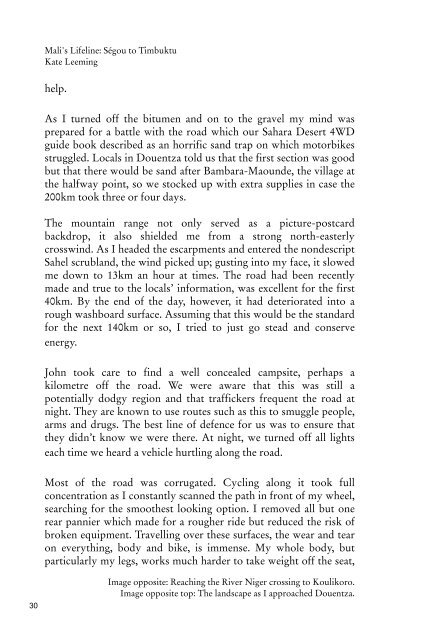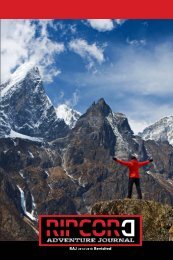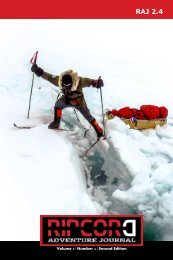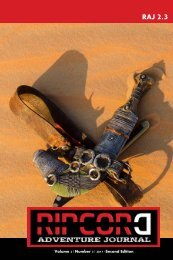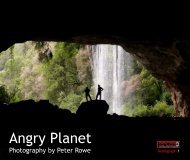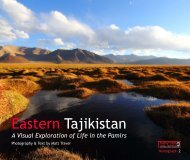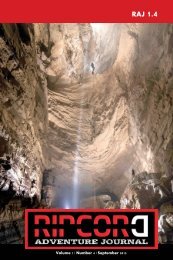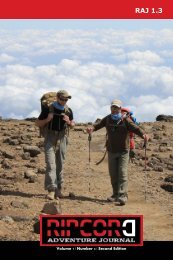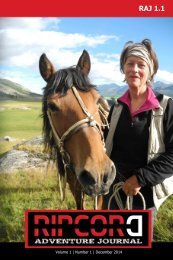Ripcord Adventure Journal 2.1
Where do we begin? A fast track literally, to Germany where a sports car and our journalist are tested to the limits and left begging for more. Following the exploits of a legendary aviator from continent to continent, our Journal proceeds to venture across Mali, cycling the route to a fabled city of gold and encountering a festival of mud which annually repairs what must be one of the "newest" old buildings in the world. Our next journey explores the concept of adventure on board a luxury cruise ship as it rounds the infamous Horn, can Shangri-la really exist at sea? This leads us thoughtfully to the colourful Monlam Cham festival of Tibet as it is explored by two friends in search of Marco Polo and inner calm, we then journey forward to an encounter with a personal hero, visit eleven architectural gems on the road less travelled and complete our whirlwind travels in the land of the Midnight Sun.
Where do we begin? A fast track literally, to Germany where a sports car and our journalist are tested to the limits and left begging for more. Following the exploits of a legendary aviator from continent to continent, our Journal proceeds to venture across Mali, cycling the route to a fabled city of gold and encountering a festival of mud which annually repairs what must be one of the "newest" old buildings in the world.
Our next journey explores the concept of adventure on board a luxury cruise ship as it rounds the infamous Horn, can Shangri-la really exist at sea? This leads us thoughtfully to the colourful Monlam Cham festival of Tibet as it is explored by two friends in search of Marco Polo and inner calm, we then journey forward to an encounter with a personal hero, visit eleven architectural gems on the road less travelled and complete our whirlwind travels in the land of the Midnight Sun.
Create successful ePaper yourself
Turn your PDF publications into a flip-book with our unique Google optimized e-Paper software.
Mali's Lifeline: Ségou to Timbuktu<br />
Kate Leeming<br />
help.<br />
As I turned off the bitumen and on to the gravel my mind was<br />
prepared for a battle with the road which our Sahara Desert 4WD<br />
guide book described as an horrific sand trap on which motorbikes<br />
struggled. Locals in Douentza told us that the first section was good<br />
but that there would be sand after Bambara-Maounde, the village at<br />
the halfway point, so we stocked up with extra supplies in case the<br />
AAAAAAAAAAAAAAAAAAAAAAAAAAAAAAAAAA<br />
AAAAAAAAAAAAAAAAAAAAAAAA<br />
200km took three or four days.<br />
The mountain range not only served as a picture-postcard<br />
backdrop, it also shielded me from a strong north-easterly<br />
crosswind. As I headed the escarpments and entered the nondescript<br />
Sahel scrubland, the wind picked up; gusting into my face, it slowed<br />
me down to 13km an hour at times. The road had been recently<br />
made and true to the locals’ information, was excellent for the first<br />
40km. By the end of the day, however, it had deteriorated into a<br />
rough washboard surface. Assuming that this would be the standard<br />
for the next 140km or so, I tried to just go stead and conserve<br />
energy.<br />
John took care to find a well concealed campsite, perhaps a<br />
kilometre off the road. We were aware that this was still a<br />
potentially dodgy region and that traffickers frequent the road at<br />
night. They are known to use routes such as this to smuggle people,<br />
arms and drugs. The best line of defence for us was to ensure that<br />
they didn’t know we were there. At night, we turned off all lights<br />
each time we heard a vehicle hurtling along the road.<br />
Most of the road was corrugated. Cycling along it took full<br />
concentration as I constantly scanned the path in front of my wheel,<br />
searching for the smoothest looking option. I removed all but one<br />
rear pannier which made for a rougher ride but reduced the risk of<br />
broken equipment. Travelling over these surfaces, the wear and tear<br />
on everything, body and bike, is immense. My whole body, but<br />
particularly my legs, works much harder to take weight off the seat,<br />
30<br />
Image opposite: Reaching the River Niger crossing to Koulikoro.<br />
Image opposite top: The landscape as I approached Douentza.


